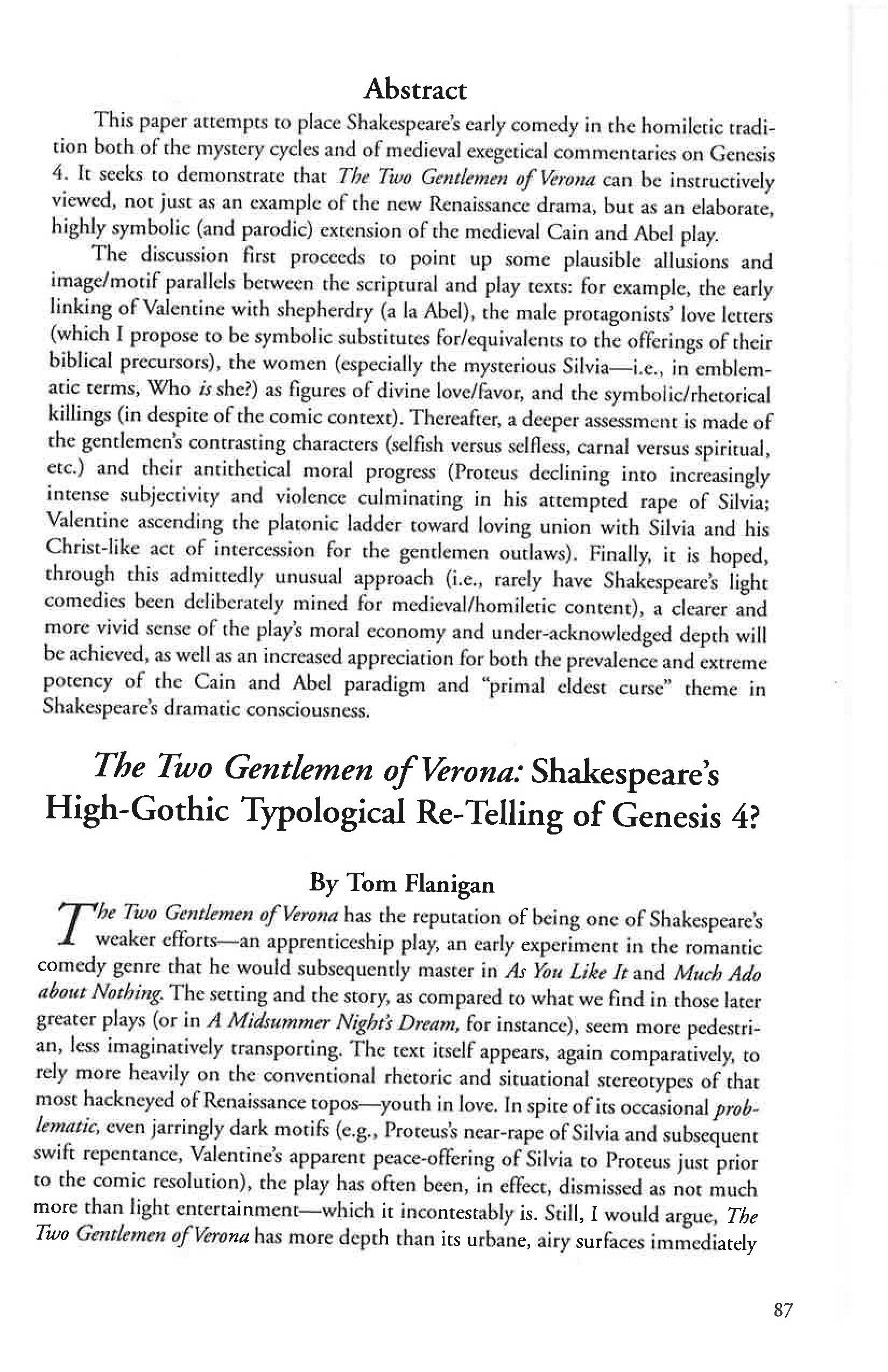The Two Gentlemen of Verona: Shakespeare's High-Gothic Typological Re-Telling of Genesis 4?
Main Article Content
Abstract
This paper attempts to place Shakespeare's early comedy in the homiletic tradition both of the mystery cycles and of medieval exegetical commentaries on Genesis 4. It seeks to demonstrate that The Two Gentlemen of Verona can be instructively viewed, not just as an example of the new Renaissance drama, but as an elaborate, highly symbolic (and parodic) extension of the medieval Cain and Abel play.
The discussion first proceeds to point up some plausible allusions and image/motif parallels between the scriptural and play texts: for example, the early linking of Valentine with shepherdry (a la Abel), the male protagonists' love letters (which I propose to be symbolic substitutes for/equivalents to the offerings of their biblical precursors), the women (especially the mysterious Silvia-i.e., in emblematic terms, Who is she?) as figures of divine love/favor, and the symbolic/rhetorical killings (in despite of the comic context). Thereafter, a deeper assessment is made of the gentlemen's contrasting characters (selfish versus selfless, carnal versus spiritual, etc.) and their antithetical moral progress (Proteus declining into increasingly intense subjectivity and violence culminating in his attempted rape of Silvia; Valentine ascending the platonic ladder toward loving union with Silvia and his Christ-like act of intercession for the gentlemen outlaws). Finally, it is hoped, through this admittedly unusual approach (.i.e., rarely have Shakespeare's light comedies been deliberately mined for medieval/homiletic content), a clearer and more vivid sense of the play's moral economy and under-acknowledged depth will be achieved, as well as an increased appreciation for both the prevalence and extreme potency of the Cain and Abel paradigm and "primal eldest curse " theme in Shakespeare's dramatic consciousness.
